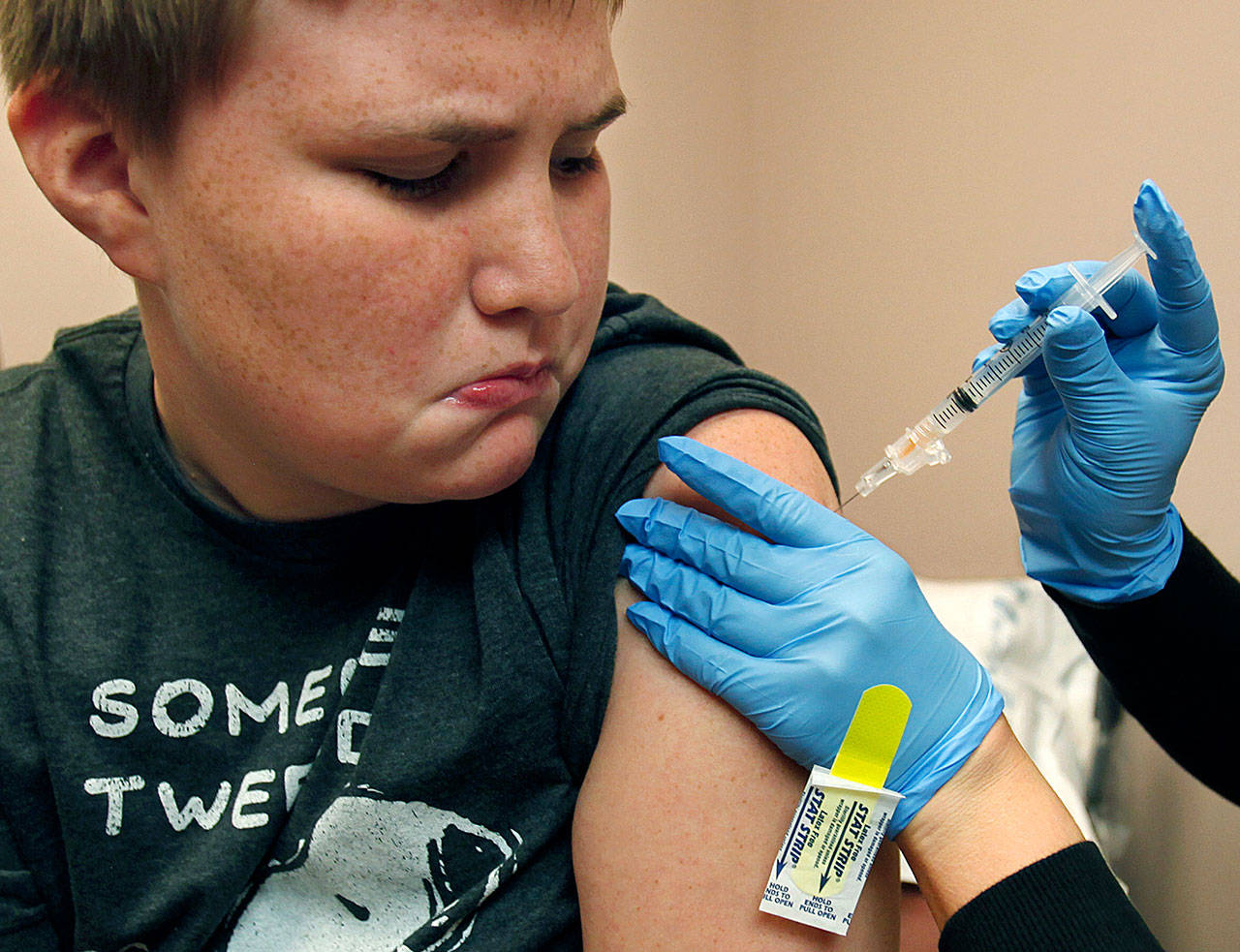By The Herald Editorial Board
What if there were a vaccine that nearly eliminated the risk of viral infections responsible for some cancers? Parents, kids in tow, would line up outside of doctor’s offices to get the vaccine for their children just as they have them inoculated against measles, mumps and rubella; tetanus diphtheria and pertussis; polio; meningitis and other viral infections.
Except there is, but parents aren’t.
Adolescents aren’t getting the vaccine against human papillomavirus — commonly called HPV — at rates comparable to other immunizations and at rates that would put the disease’s spread in check, and at a time when the incidence for HPV and the cancers it can cause are increasing.
A report released this month by the federal Centers for Disease Control and Prevention showed that for a recent two-year period, 2013-14, 45 percent of men ages 18 to 59 had an HPV infection and 25 percent — 1 in 4 men — had a type of HPV identified as being high-risk for genital cancers. About 40 percent of women in that age bracket had an HPV infection, and 1 in 5 had the high-risk virus.
Human papillomavirus is the most common sexually transmitted infection, so common that the CDC reports that nearly all sexually active adults will contract it at some point in their lives. But most who have HPV, either as an oral or genital infection, may not see symptoms for years. And typically, the disease clears the body on its own. When it doesn’t, however, it can lead to genital or anal cancers or oropharyngeal cancers in the back of the throat, the base of the tongue, the soft palate or tonsils.
The number of oral cancers remains relatively small, according to a recent Washington Post report, with about 12,600 reportedly annually in the U.S. among men and 3,100 among women. But the CDC expects those numbers to increase and overtake the incidence of cervical cancer by 2020. The Post story pointed to one study that found before 1990, HPV was present in about 21 percent of oropharyngeal cancers but had risen to 65 percent in samples after 2000, making it the principal cause of those oral cancers.
And while HPV is spread through sexual contact, health experts say the vaccine is not something that can wait until a person is sexually active. The vaccines are licensed for those ages 9 to 26, but are recommended for preteen girls and boys between 11 and 12 because the vaccine is most effective in producing an immune response at those ages, said Rita Mell, supervisor for Snohomish Health District’s vaccination and preventable disease program.
And for those 14 and younger, Mell said, the federal Food and Drug Administration has recently reduced the recommended vaccination from a series of three shots to just two, which should help increase the number of children who complete the course of immunization. After that age three shots, six months apart, are still necessary for full protection.
Following the closure of the health district’s vaccination clinic in 2015, the district now works with doctors and health care providers to encourage inoculation whenever adolescents make an office visit.
“We want them to make that recommendation every time they see an adolescent for any care, for a sprained ankle or anything. Every visit is an immunization opportunity,” Mell said.
There’s room for improvement. According to a 2016 health district release, only 9 percent of 11- and 12-year-old boys in Snohomish County had completed the three-shot course for HPV, while 30 percent had initiated the HPV series. The numbers were higher for girls, 11 and 12, with 24 percent having completed the series and 44 percent having begun the series.
Vaccination rates for HPV are increasing in Washington state, as they are for all vaccines, according to state Department of Health figures. The vaccination rate for the Tdap vaccine (tetanus, diphtheria and pertussis) among pre-teens increased from 77.2 percent to 85.4 percent, while those beginning the HPV series increased to 60.4 percent from 51.6 percent. Still the rate for completion of the HPV immunization was only 21.6 percent, up from 13.8 percent.
The change to a two-shot series and the recent emphasis with health care providers should begin to improve those numbers, Mell said.
The vaccines used against HPV, and the health benefits they offer, should be seen no differently than any other childhood immunization.
There’s a responsibility here for parents to recognize the HPV vaccines’ potential to nearly eliminate the likelihood of infection and greatly decrease the potential for cancers later in their children’s lives.
Talk to us
> Give us your news tips.
> Send us a letter to the editor.
> More Herald contact information.

























